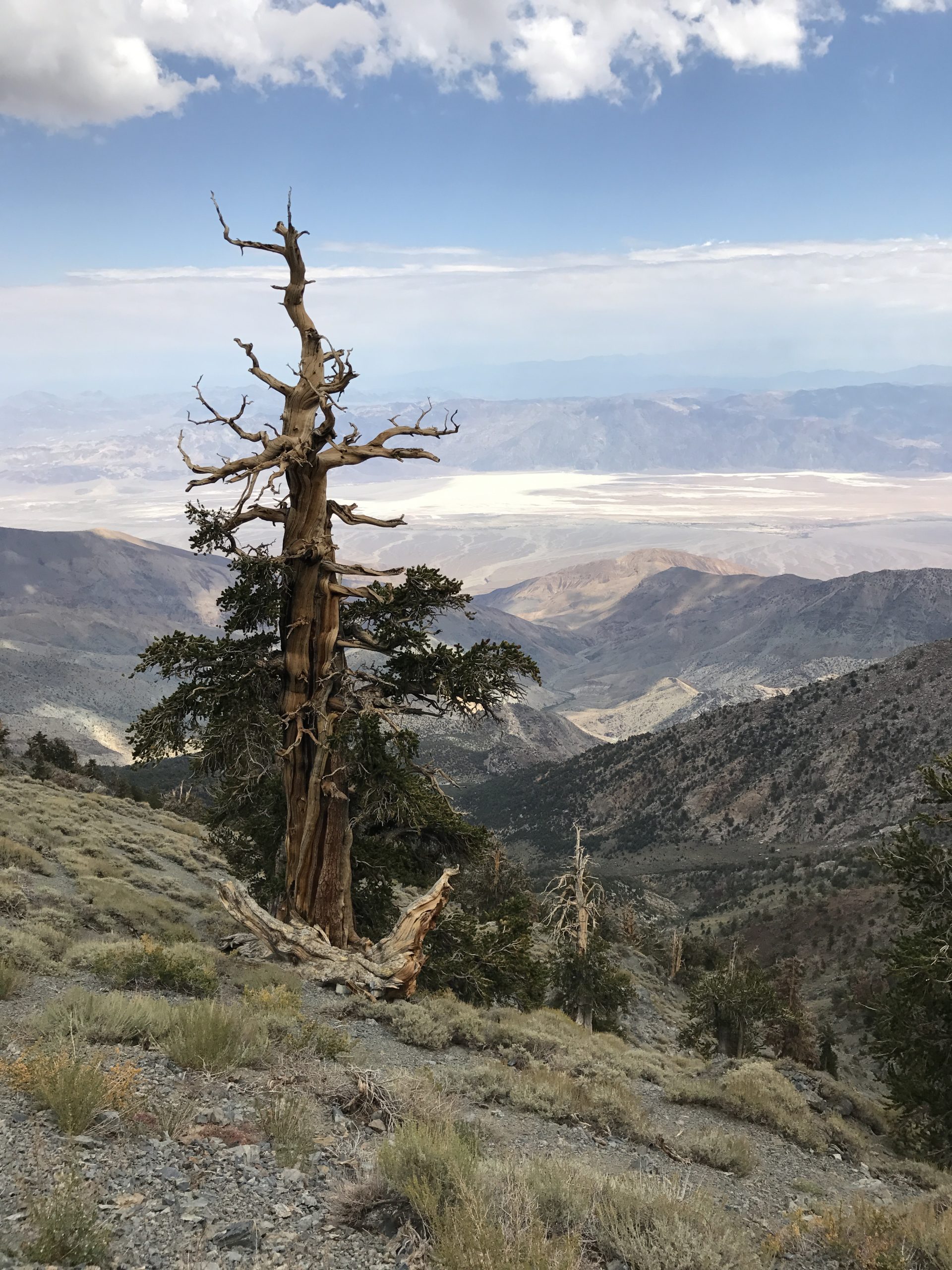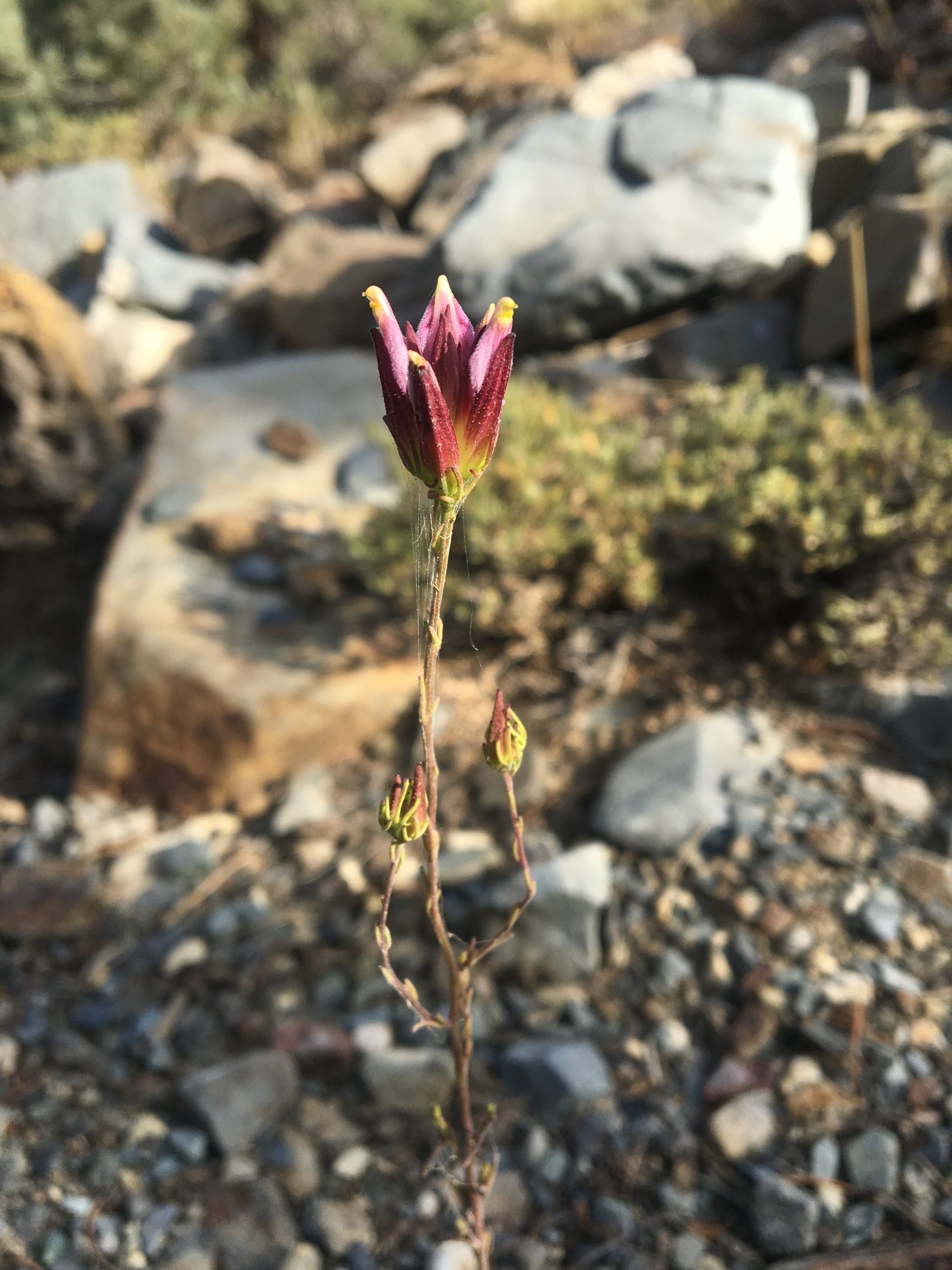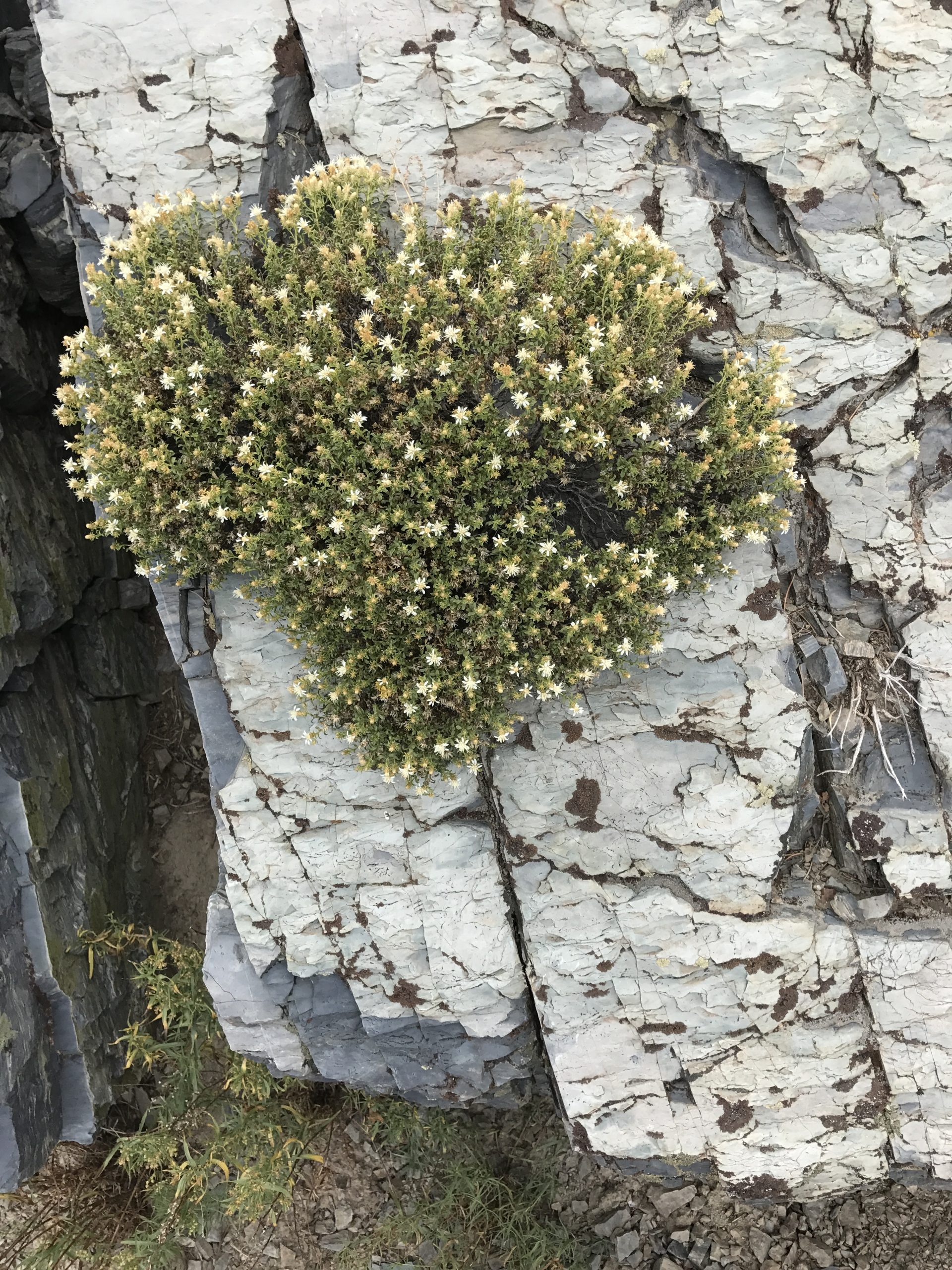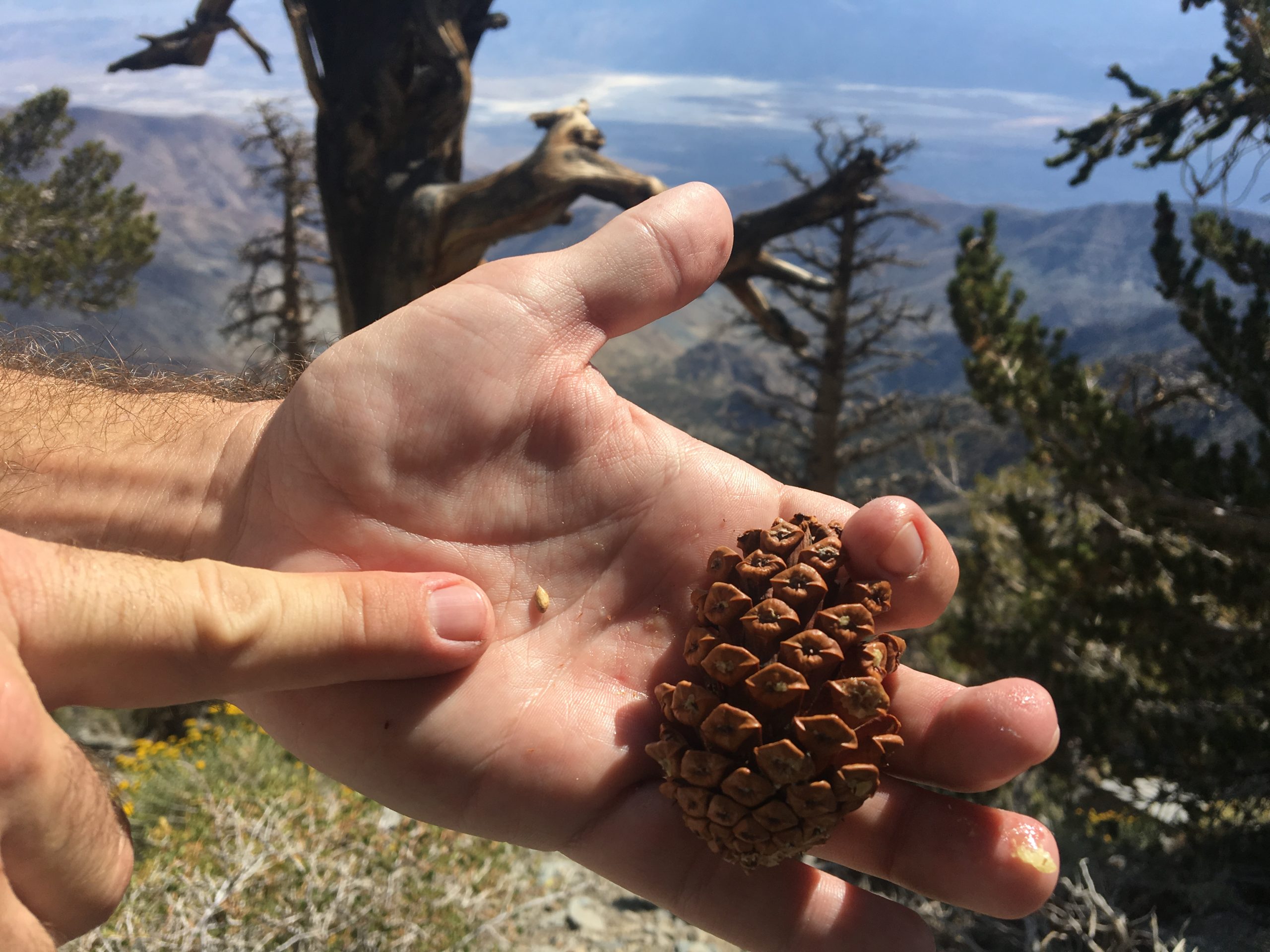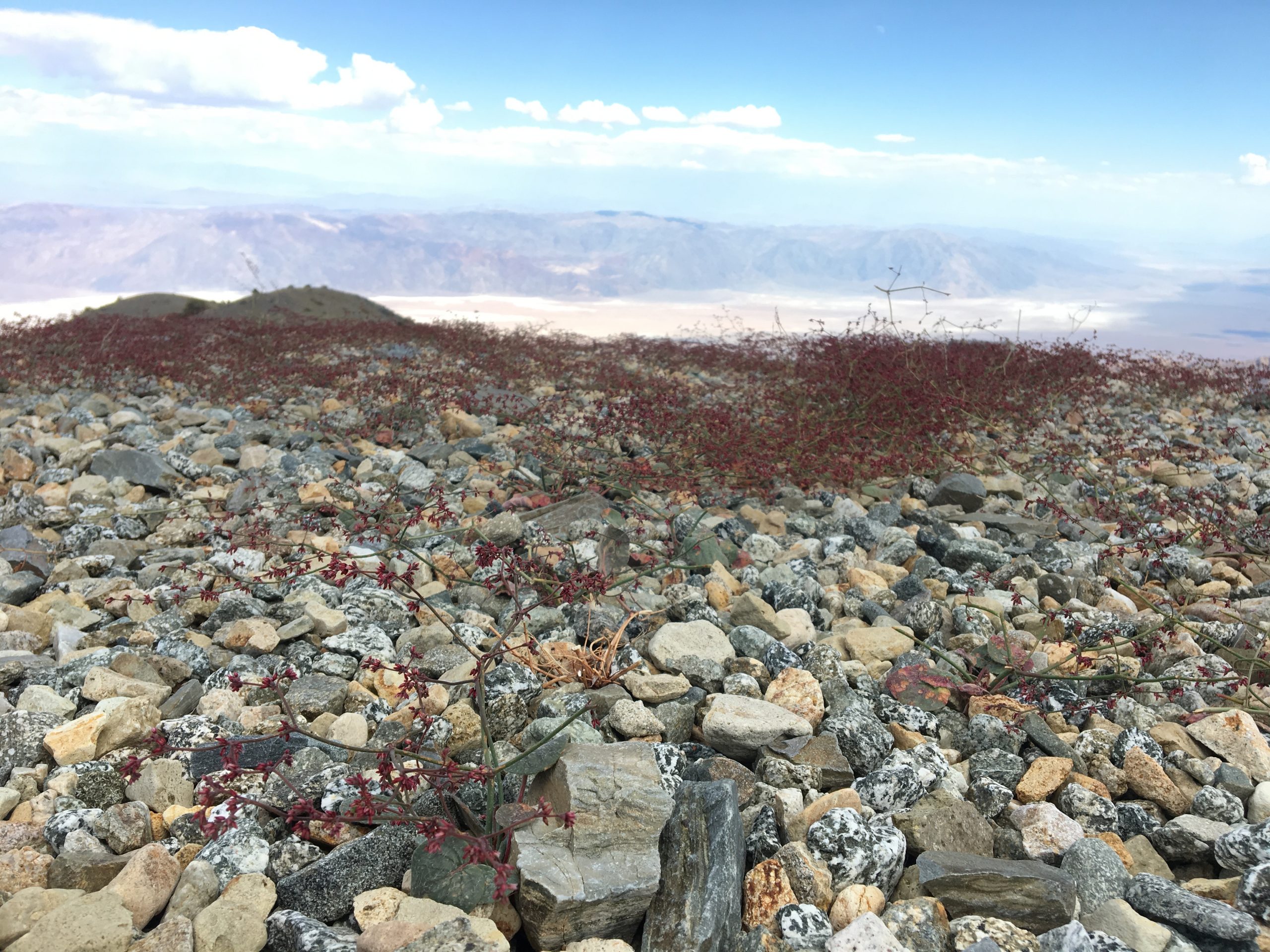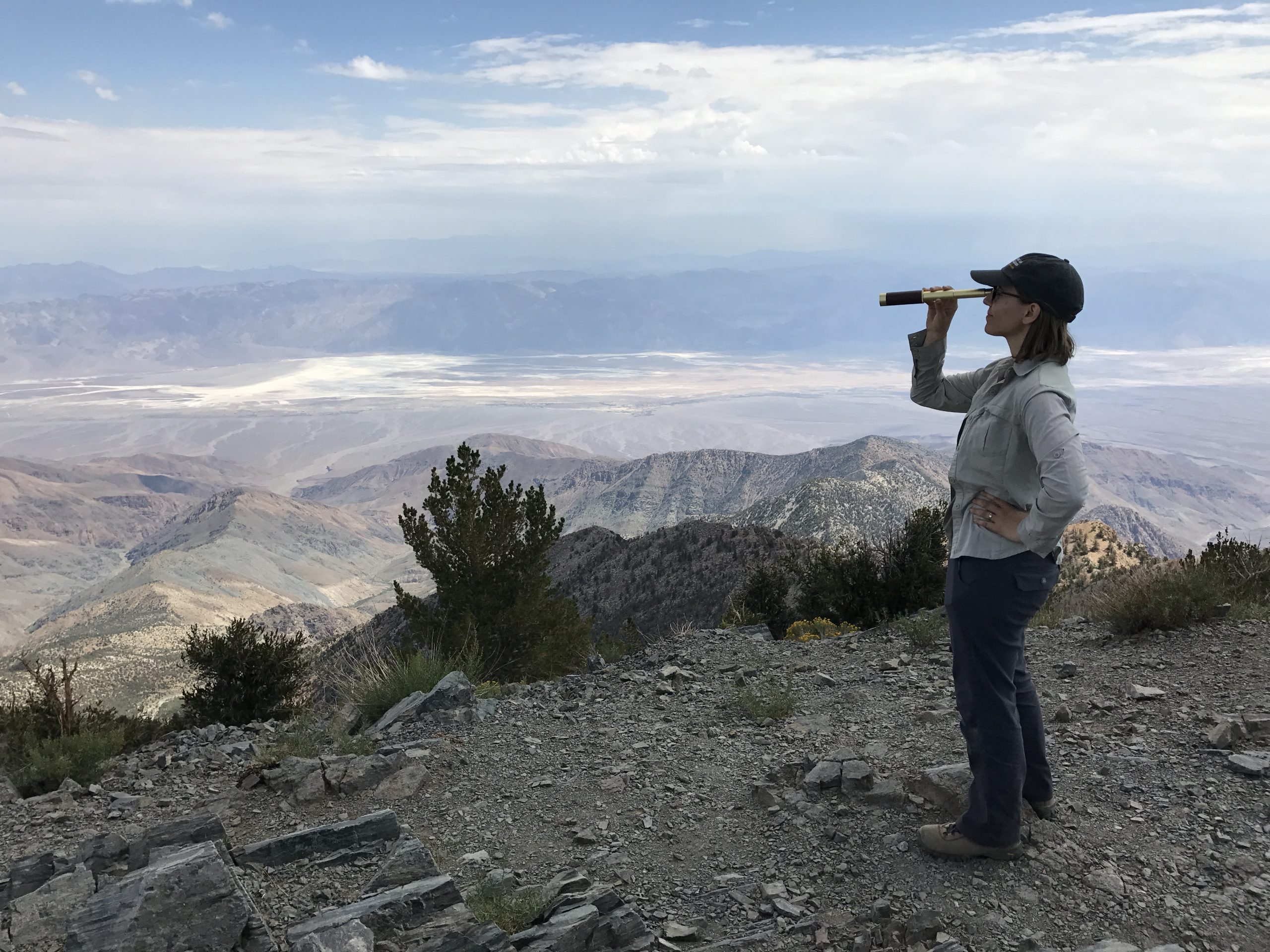Seed Collection in a Land of Extremes
People thought Cheryl Birker must be crazy when she told them she was going to be doing a 14-mile hike in Death Valley National Park to monitor plants in August. Death Valley National Park is, after all, known for extreme heat. But Cheryl, Seed Conservation Program Manager at Rancho Santa Ana Botanical Garden (RSABG), and Duncan Bell, RSABG’s Senior Field Botanist, were headed to the Panamint Range, a stretch of mountains along the western edge of the park reaching 11,049 ft, where it was a lovely 75 degrees. Home to ancient Bristlecone pines (Pinus longaeva) and bright annuals, these mountains are botanically diverse and host a number of plant species endemic to the range and many rare species. Plus, botanists can enjoy a 360°-view that simply cannot be beat – capturing both the highest and lowest points in the continental U.S.
The unique diversity of Death Valley National Park, and the Panamint Range in particular, made the range an excellent location for RSABG to make collections to advance the goals of California Plant Rescue (CaPR). CaPR is a collaborative project to secure the future of California’s native flora by collecting seeds for long-term preservation and to record information from wild populations to support land management efforts. With CaPR goals in mind, and building off a relationship with the National Park Service (NPS) established nearly 10 years prior, Naomi Fraga (Director of Conservation Programs) reached out to the NPS to initiate the project and to secure the necessary collection permit. RSABG’s relationship with NPS began to take shape when they partnered with Joshua Tree National Park as part of the CPC’s initiative in the 2000s and early 2010s to conserve the federally listed species on National Park lands.
Despite the short duration of the permit, RSABG collection efforts met with great success. In 20 months they were able to make 16 collections of 11 different species in the park, most within the Panamint Range. The species are all recognized as rare, to some degree, by the California Native Plant Society’s rare plant inventory, several are ranked G1 or G2 by NatureServe, and a handful currently occur only at the top of Telescope Peak, the highest mountain in the range.
Many of the species Cheryl and Duncan collected are naturally rare, occurring in only a narrow range which happens to be protected in our nation’s robust national park system. Even so, these plants are facing multiple threats. The popularity of the Park works against some species. For instance, an understated root parasite, desert bird’s beak (Cordylanthus eremicus ssp. eremicus) is found in the vicinity of the Wildrose Charcoal Kilns, a popular tourist stop in Death Valley, where it is subject to trampling and other disturbances. However, climate change may pose the widest and most dire threat. A sky island habitat, the Panamint Range are surrounded on all sides by desert. This leaves the species at the top of the tallest peak with no place to go in the face of rising temperatures.
With these plants at risk, it is important for botanists to know how to propagate the species for either restoration to the wild or to maintain in collections. RSABG is taking this on, too. As they test seed for viability and learn to propagate, the resulting seedlings generated from the testing can then be used for seed bulking and inclusion into the garden’s living collection as a further means of ex-situ conservation.
Cheryl and RSABG hope to continue their work with NPS in Death Valley NP, Joshua Tree, and other parks in California. They know they will continue to research and learn about the rare treasures they have already found there.
Photo credit: Cheryl Birker and Duncan Bell, Rancho Santa Ana Botanic Garden.
